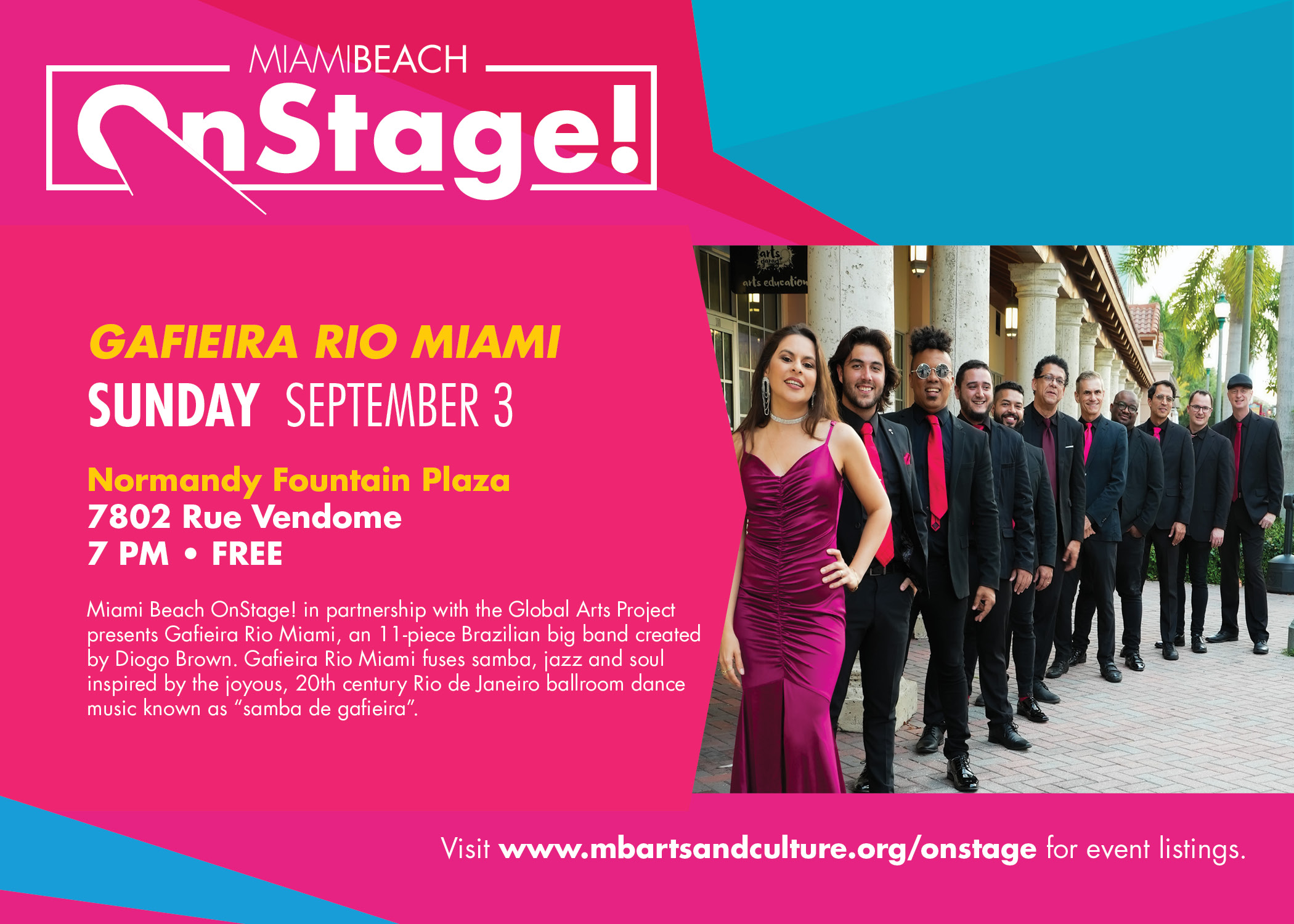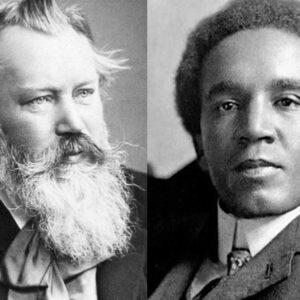09/03/23 Gafieira Rio Miami At Normandy Fountain Plaza

September 3rd 2023 – The City of Miami Beach in partnership with Global Arts Projects Inc. Presents OnStage Music Series!
Gafieira Rio Miami At Normandy Fountain Plaza!
Gafieira (Gah-fee-ay-rah) is a word from Brazilian Portuguese that means different things to different people. A music reference book says it’s “a type of samba, danced in pairs.” But gafieira is also a low-rent hall or honky tonk where starting in the early 20th century, the predominantly black underclass of Rio de Janeiro would go to enjoy live music, mainly samba, and practice couples’ dancing. In those days, musicians would perform waltzes, tangos, and polkas at the white upper-class events and then would head to the gafieiras and let it roll.
Soon after the sound of the big bands, then popular in the United States, reached Brazil, the musicians in Rio began to make it Brazilian, combining standard brass and horns with a samba rhythm section. That became the sound of gafieira. Long gone, these places once offered great music and loose, unpretentious fun.

“For me, it’s a cultural rescue of something we had in the ’40s and ’50s, “says Brazilian Latin GRAMMY winner, bassist, and composer Diogo Brown, the founder and music director of Gafieira Rio Miami.
“Gafieira is not a genre of music. Samba de Gafieira doesn’t necessarily mean only samba. There is also a mixture of styles, such as chorinho, pagode, and maxixe. Gafieira is where the sambistas met to dance,” he explains. “But society did not like those places. Bossa Nova was created in the privileged neighborhoods of the upper middle class of Rio. Samba was a product of the favela (shanty town) and was the music of black people, people suffering from racism, from being put down. The sambista was seen as a marginal character, a troublemaker, and because of it, constantly harassed by the police. So the sambistas organized themselves and found spaces in the city’s outskirts. Gafieira eventually grew in popularity and acceptance to the point that it was taken to big theaters and the ballroom of the Copacabana Palace, the grand luxury hotel in Copacabana Beach. Every dance hall and bar in the city played this music. And then, in the 1980s, the party died. My idea is to bring back the gafieira sound — with a modern sheen.”
“Half of the band is Brazilian — the rhythm section, a cozinha, the “kitchen” — and the other half, the horn section, is pretty international,” notes Brown, a ductile player who won his Latin GRAMMY as part of with Gloria Estefan’s Brazil 305 in 2021. “We have musicians from Venezuela, Cuba, and the United States, which gives the music a mixture of flavors, cultures, and ideas.”
Both sophisticated and accessible, Gafieira Rio Miami regularly sells out concerts in South Florida and will be touring around the US in the coming year. The band’s first music video, for the song “Nó Na Madeira,” quickly gained over 10K views on YouTube just days after its release. The video caught the attention of The World, the nationally syndicated program on PRI, which did a feature on how a gafieira big band emerged from the Brazilian community in South Florida.












